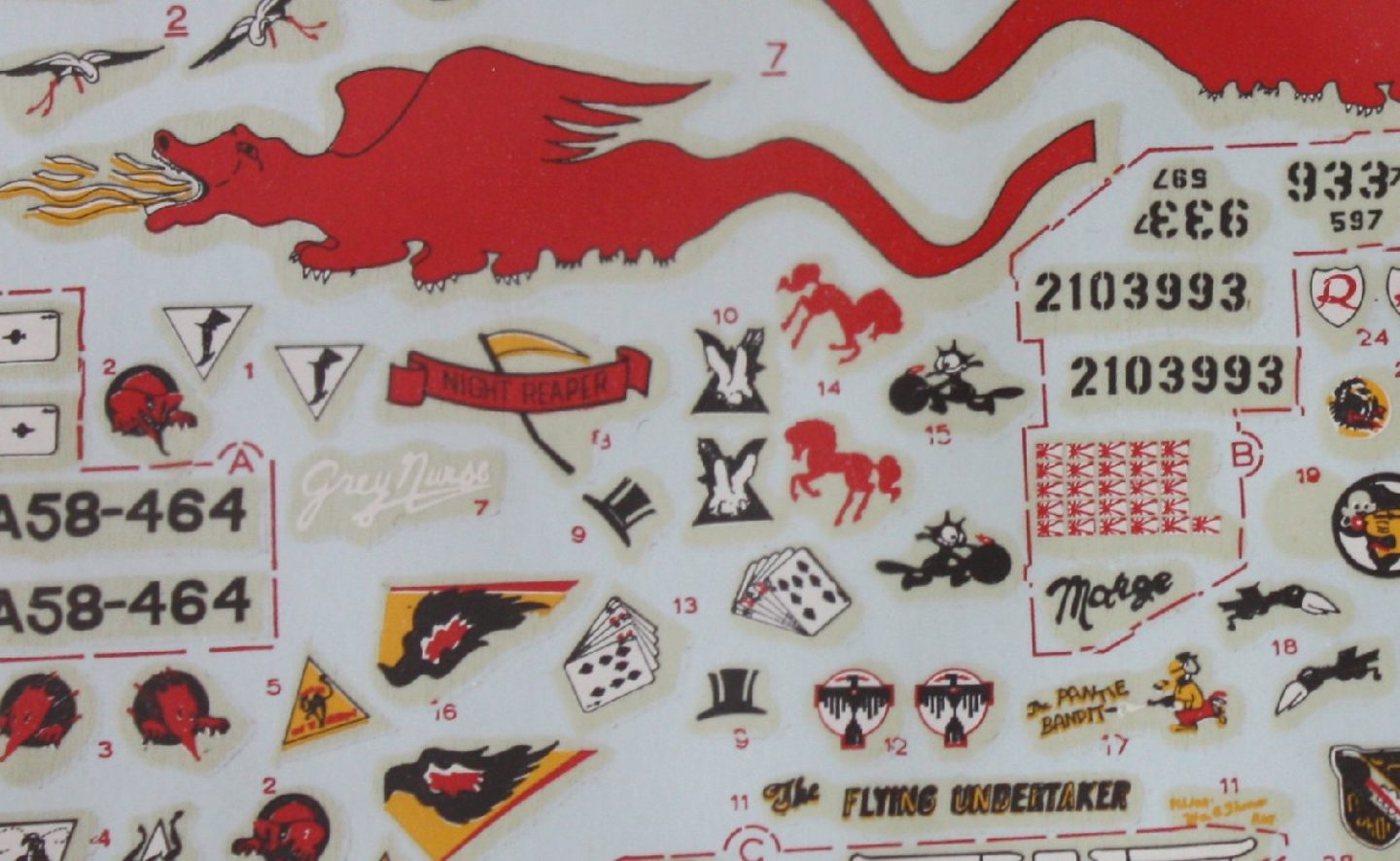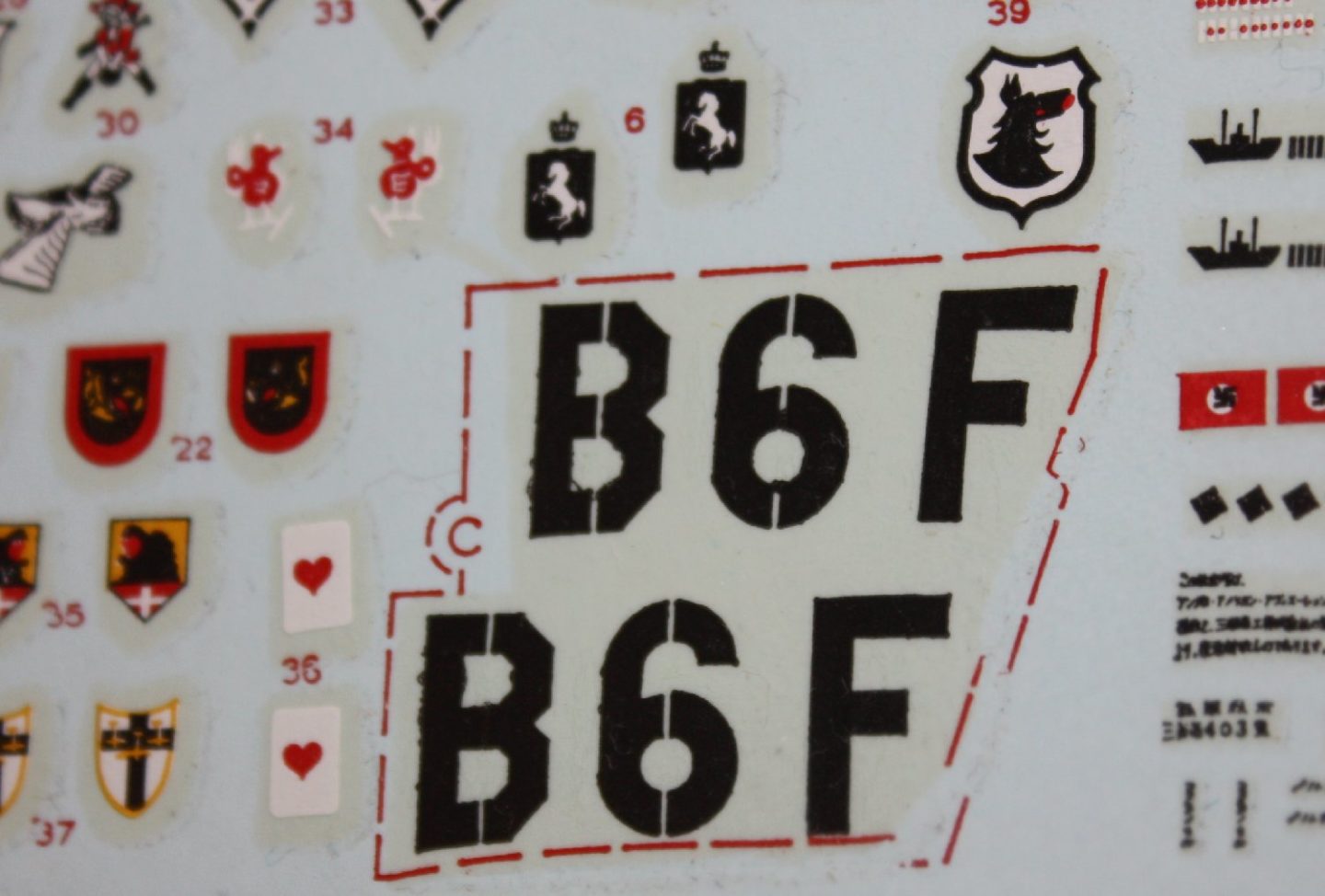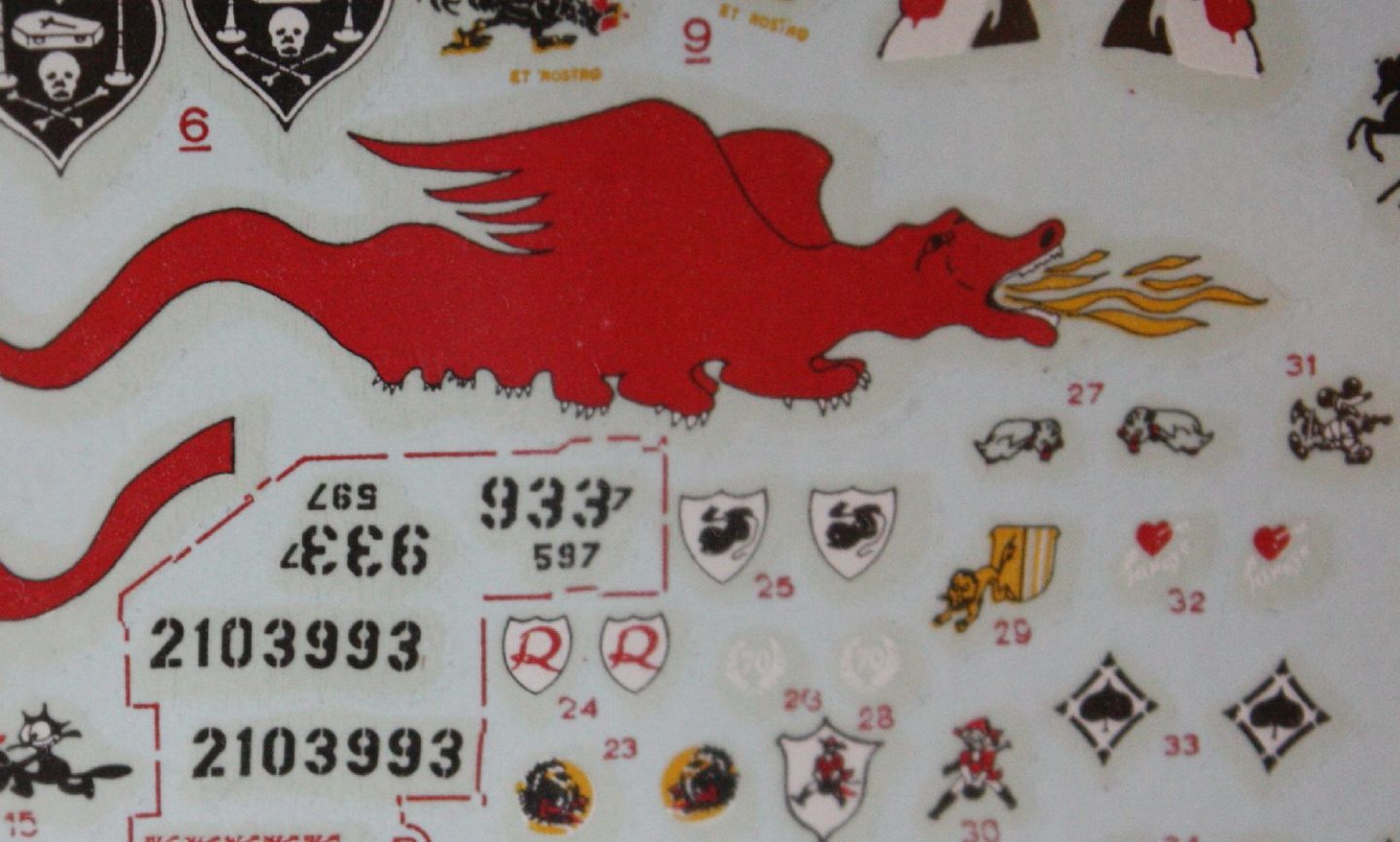For anyone who has been working with plastic model kits for any length of time, there is a good chance they’ve encountered an old set of decals that have ‘yellowed’ on the sheet. Whatever the cause, there is a ‘trick’ to removing the yellowing from the clear film areas that usually works very well: sun bleaching.
All that is required is a sealable clear plastic bag (big enough to hold the decal sheet) or clear document ‘sleeve’ (as used with below example) and some cellaphane tape. Seal the bag and then tape to a window facing the sun’s primary direction (for example, south-facing in the northern hemisphere…). Then leave the sheet exposed to the sun until the yellowing has disappeared. This may take quite a while depending on the extent of the discoloration and of course on the degree of sunny days, so be patient. The plastic bag is necessary to protect the decals from any moisture that may occur on the face of the window glass.
Here is an example of an old aftermarket sheet (HistoDec?) showing the progression of the clear film’s ‘brown’ haze as it is cleared just by exposure to the sun’s light.



One note on “old decals”: yellowing of the clear film probably indicates the decals will also need special care when attempting to use them. Although probably a general good practice, a ‘test’ of an unused decal from the sheet to check if the decal might fragment/crack while being used is a good idea. If you can actually see ‘cracks’ in the decal, they are certain to have this problem; use of a suitable clear spray overcoat may help, again followed with a test to check results. If serious help is needed, Microscale makes a liquid ‘decal film’ that can be used to support fragile designs.
If all else fails, then scanning the original sheet and reprinting the most critical design element is always an option – a job made easier when the clear film is indeed ‘clear’!
